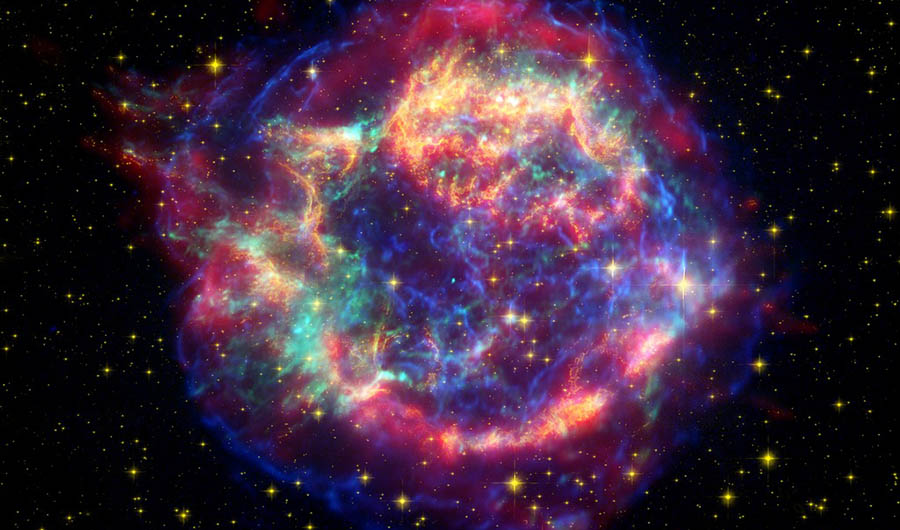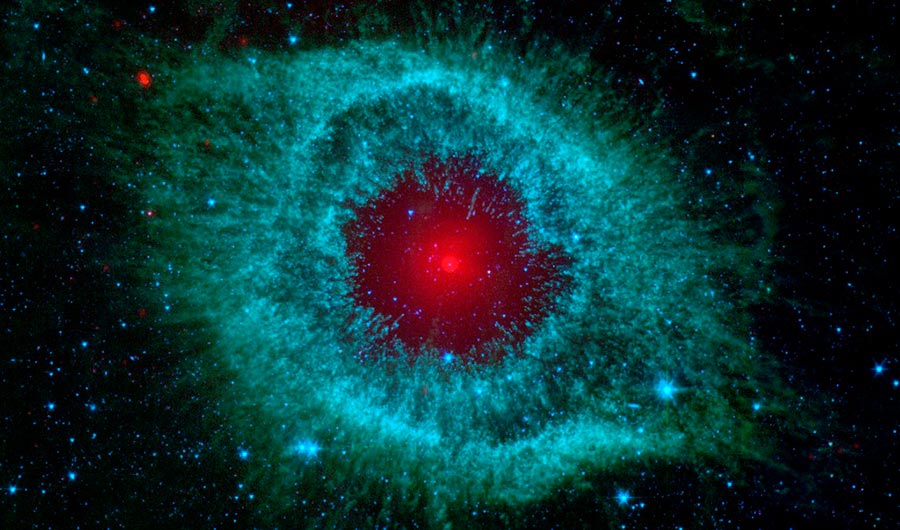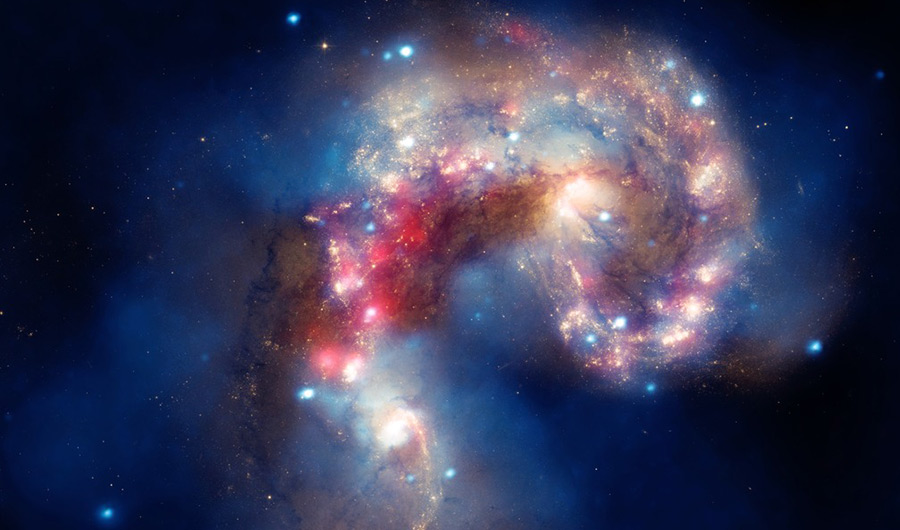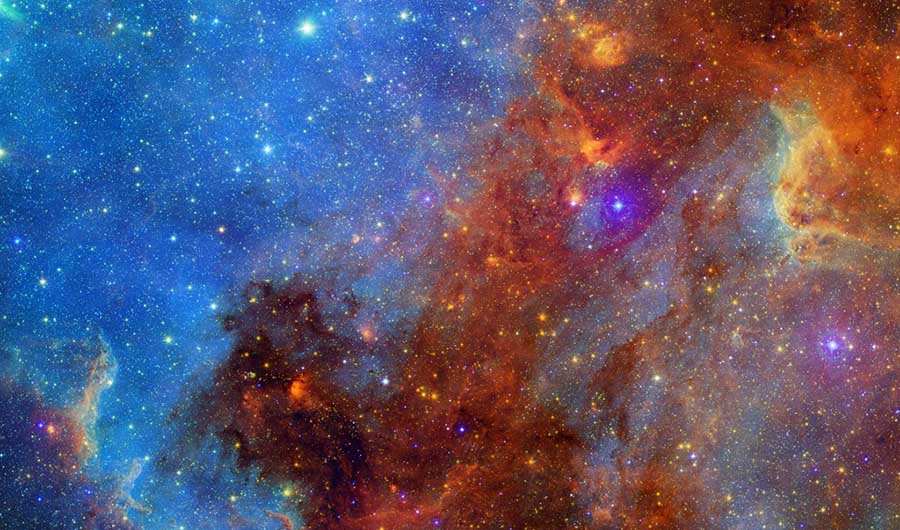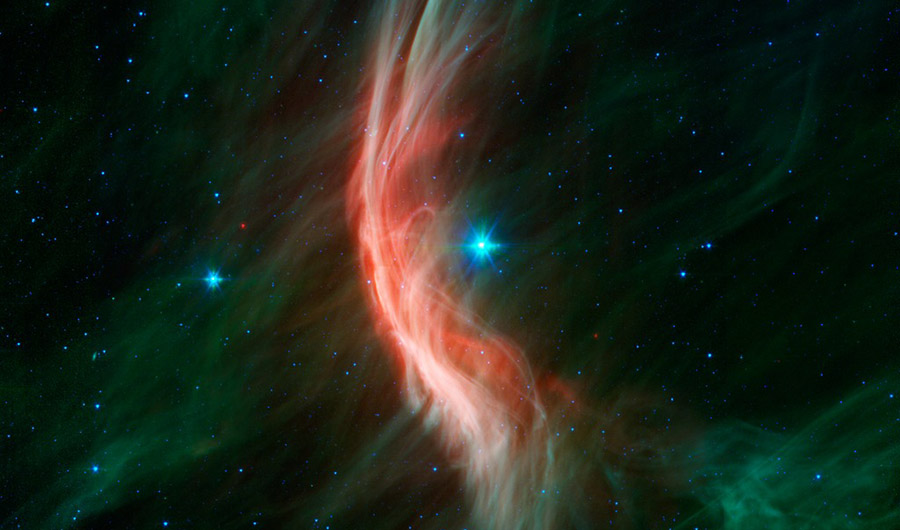The Spitzer Space Telescope Signs Off
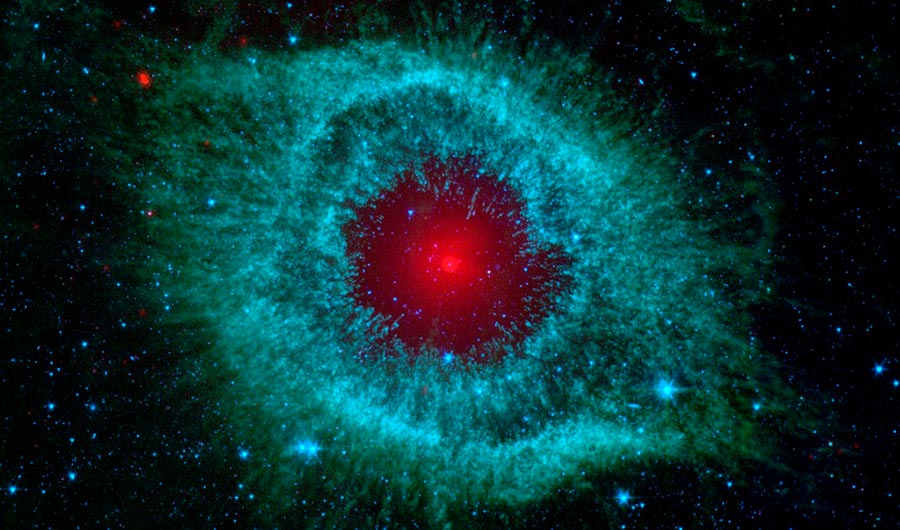
The Helix nebula, imaged here in 2007, resembles a giant eye.
(Inside Science) -- The telescope that discovered the largest ring of Saturn, detected the first direct evidence of an exoplanet, and imaged remnants of the oldest documented supernova is retiring after 16 years hard at work. NASA’s Spitzer Space Telescope was launched in August 2003 from Cape Canaveral Air Force Station in Florida. It detects infrared light, which is invisible to the human eye, and such vision allows it to peer through dense dust and gas to see hidden realms of the cosmos.
Spitzer’s capabilities and mission have evolved over the years. In 2009, it ran out of liquid helium to cool its telescope assembly, but continued to operate in a “warm phase,” (which was still pretty cold compared to Earth-based telescopes.) The spacecraft is drifting slowly away from the Earth, making it increasingly difficult to operate. NASA gave the spacecraft its final shut-off commands on Jan. 30.
Here we have compiled five of our favorite images that Spitzer took during its 16-year journey, selected for their aesthetic qualities.
Introduction by: Catherine Meyers, Editor

